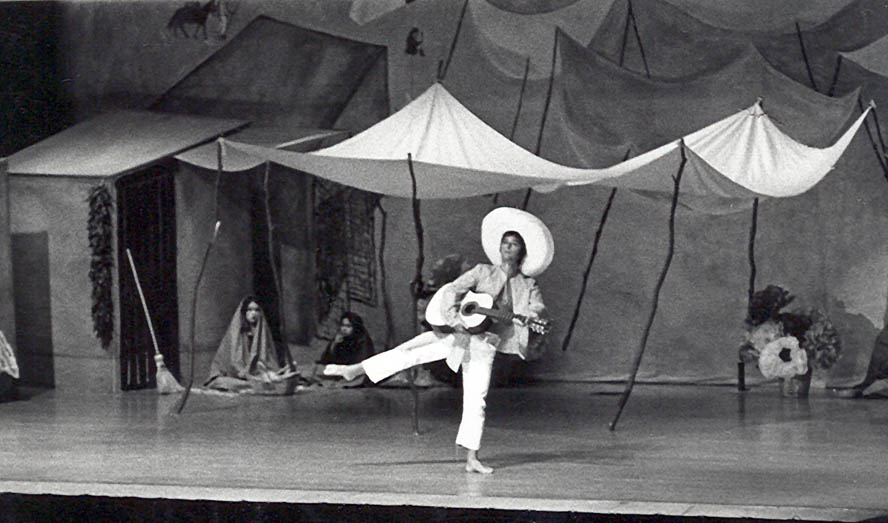|
CHAPTER 9 Tucson, Arizona – My First Visit It’s founder, Elizabeth Shaw, had read my feature articles in Dance magazine. Apparently, as an editor for the University Of Arizona Press, she was impressed that a dancer/choreographer would have writing skills as well, and thought I would be an ideal person for the job. In addition to choreographing and staging, I could offer myself as a dancer for the fledgling company as well. Having time to do this was not a problem. My job at the Met allowed me to take off whenever I wished. Arriving in Tucson I was greeted at the airport by a group of Vigilantes who put a noose around my neck and cut off my necktie. They certainly frightened me at first. Apparently this was a Tucson tradition of greeting and welcoming celebrities to the wild west! I was given a suite at the rather famous Santa Rita hotel where many film stars had stayed, Tucson being a center for the Hollywood movie industry. The next day I began auditioning local dancers.
There were not that many fully trained dancers in Tucson at that time. I managed to find three or four for the main roles but I had to do with what I had for the rest. That’s when I learned how to tailor choreography to fit the limited abilities of dancers, which was an advantage for me in future years. I was to produce a full-length “Nutcracker”, the first in the State of Arizona. I had brought costume and scenery designs with me, done by a New York professional and there were teams of Tucson volunteer seamstresses, carpenters and painters, ready to put them all into reality.
When the sold-out performances had finished and I was about to take a plane back to New York, a group rushed out to the airport to show me the morning paper. I was aghast to find a rave review and calling me a ‘genius’ to put this Nutcracker together in the first place. Nutcrackers proliferate all over America, but there had been none in Arizona until this one. At this writing in 2006, there are seven annual Christmas Nutcrackers in Tucson, from student recital types to the professional “Tucson Ballet”. The professional “Ballet Arizona”, based in Phoenix, is really a continuation through a long line of directors of the Tucson Civic Ballet, which I started in 1967. Other ballets I choreographed were ‘The Seasons” and
“Round-Up”. Oddly enough, “Round-Up” with its cowboys, Square
dancing, Western motifs, even a stage coach, plus the Tucson
Symphony playing the Hershey-Kay “Western Symphony” score, was not
entirely successful. One would think it would be in the Southwest,
but Tucson was already too familiar with cowboys and the western
gear to be much impressed. On the other hand, when I later staged it
in Kansas City with the Kansas City Symphony, it was My Nutcracker not only had received a rave review but I was called “the man of the hour’. This all went by un-noticed back at the Met, but it carried me along for a long time. To give me something to read on the plane back to New York I was handed a huge book on Arizona history that I kept dipping into and dreaming about how, when I finally was ready to throw off my dancing shoes for good, I would move to Tucson and settle there permanently. In spite of the hustle and demands of Nutcracker, I had somehow found time to fall in love with the desert of Arizona. While busy with the Met’s 1968 Winter season I kept getting enticing phone calls from Tucson. Certain people, having been bitten by the ballet bug, were primping to bring me back for another go. April arrived and the Met gave me another free month to return out west to do whatever it was that I did, they were never quite sure. Tucson went all out for this one, my two act “Alice In Wonderland”. This was not the version I danced back in England with Ballets Minerva. Not even the one I had choreographed in Oregon a few years before, but an entirely new approach, using three Mahler symphonies.
Then came the biggest surprise of all. It won the National Broadcast Media Award! I suspected not for the dancing but for the technical camera work such as Alice falling down the rabbit hole, or growing to gigantic size and then shrinking to three inches.
Photo Left: Jane Crawford as Alice, myself as The White Rabbit.
Agnes DeMille And Her “Rodeo” Now that I was a regular visitor to the Southwest I could appreciate her ballet “Rodeo” all the more. As my April visit to Tucson coincided with the annual Fiesta De Los Vaqueros, I foolishly thought of doing her “Rodeo” and wrote to her about the possibilities of me staging it. In exchange for the rights to do it, I volunteered to notate it, free of charge. She wrote back, horrified. She would have to know the company she said, and besides, after she left the role, no one else has been really able to do it right. She practically accused me of wanting to steal it . When I wrote back that surely, as a choreologist my job was to protect the work of choreographers, not to steal them, she apologized and explained that she had been stolen from so much before. She also wanted to meet me and have a talk. I suspected that the fact I was in the Southwest and wanted to do a ballet on cowboy themes must have intrigued her. At the time she was opening a new musical with her choreography in Boston, and as it turned out to be a bomb, I felt it was no time to visit her. The invitation went nowhere. Instead of “Rodeo” I choreographed my own ballet called “Round-Up” to Hershey-Kay’s score for Western Symphony. It was foolish of me to think of “Rodeo” in the first place as the Tucson company was not in any sense able to do that. “Round-Up was a better choice. I was able to use local color. Native Americans, a stage coach, a shoot-out, and a genuine square dance with caller.
Coppelia I had really wonderful costumes and scenery for this
production. The 2nd act looked a bit like Dr. Frankenstein’s
laboratory, so it said in one review. I played Dr. Coppelius, making
myself up to look very, very old. Photo Left: Leigh Ann Barber as Swanilda. Me as
Dr. Coppelius. I stage an opera … “Pagliacci” I was already familiar with this opera having heard it many times. I wanted Canio - the leader of a traveling troupe of players - to make his entrance in a wagon pulled by a live donkey. We got the donkey with no problems, but no amount of pushing and pulling would get him to enter the stage door! Then, the scene designer brought in by Millar from Illinois appeared to know absolutely nothing about stage design and kept asking me questions of what he should do. I looked in horror as he tore a giant hole in the center of the sky drop to make an entrance for some singers. But the opera was a big success. The Arizona Opera went on to become a leading opera
company in the USA and for which, many years later, I became its
resident choreographer. The music was a commissioned score by Robert McBride, who had written for Martha Graham. He was then teaching at the University of Arizona. Friends back in New York, on hearing my tape of this music told me, if I could choreograph anything to it I would indeed be a genius! But it had already been arranged so I had to use it.
Photo Below: Here I took Travis' guitar and danced a solo in "Brooms of Mexico"
More upsetting was a dancer I hired for “Coppelia”
the year before. He claimed he had danced with the Royal Danish
Ballet, but this was a bit doubtful. Besides, his dance ability was
mediocre. At any rate I hired him to dance the leading role of
Franz. It was a wrong choice. During the “Coppelia” run he ripped
the beautifully designed girl’s costumes apart, saying they were all
wrong. During the cast party I overheard him telling the dancers
that he would come back the following year and give them some really
“professional” choreography. Since the “Coppelia” they were doing
was an exact replica of the Royal Ballet version with choreography
by the great Arthur Saint Leon, I wondered what choreography could
be more professional. Just as the festival was about to end, word came that the Met in New York had gone on strike. As usual, it was agitated by the orchestra musicians. Just across from the Met on Lincoln Center plaza, the New York City Ballet had plenty of strikes to deal with. The City Ballet was headed by the great choreographer, George Balanchine. In the midst of one long strike that shut down the City Ballet for months, he angrily announced that people come to the ballet to see the dancing and not to hear the music but, heavily unionized, the orchestra always won. However, ballet can make do with recorded music, not so with opera. During the strike, the longest in the Met’s history, Dame Alicia resigned and some of the dancers left, never to return. I wasn’t sad about this temporary break. My life seemed to be made up of these complex pathways on which I moved from one phase to the next. For some of us, our paths are wide, smooth, and clearly marked. Mine never were. I had to determine where the next step would land me. Until the Met would re-open I decided to return to England where I had found so much fulfillment. England was always good to me. I hopped on a flight to London. |
 Photo:
Vigilantes give me a warm welcome at Tucson airport in 1967
Photo:
Vigilantes give me a warm welcome at Tucson airport in 1967
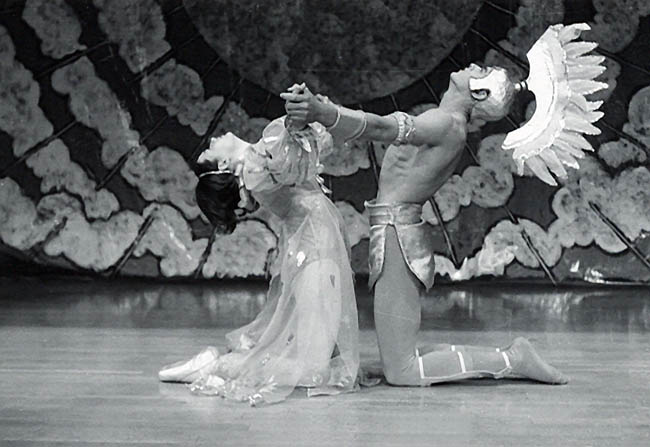
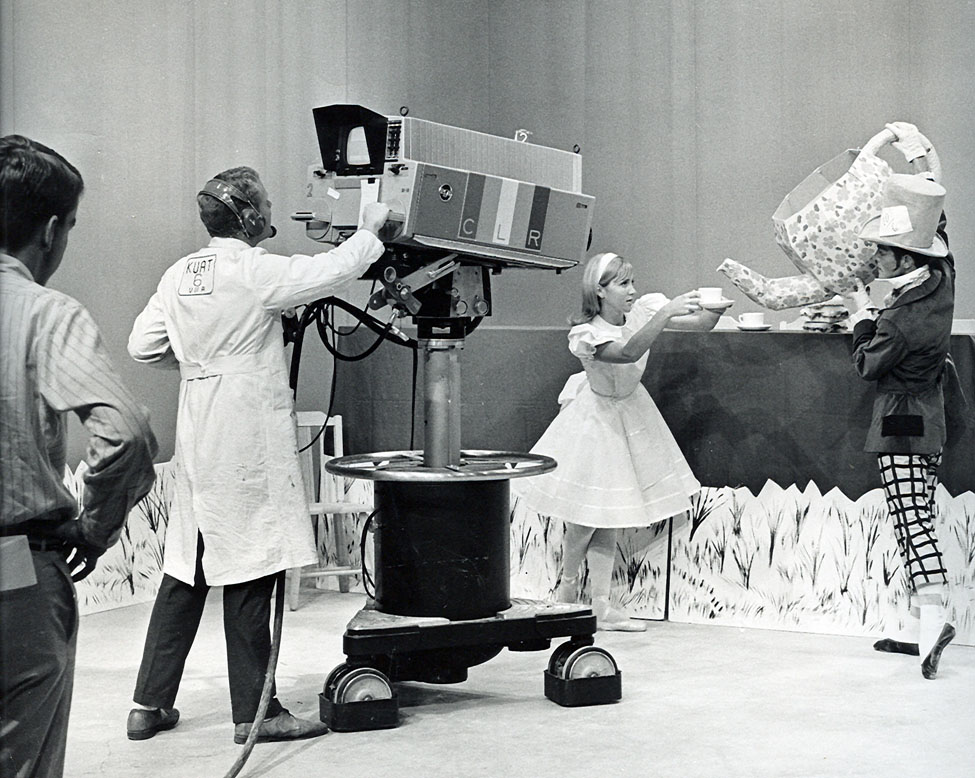
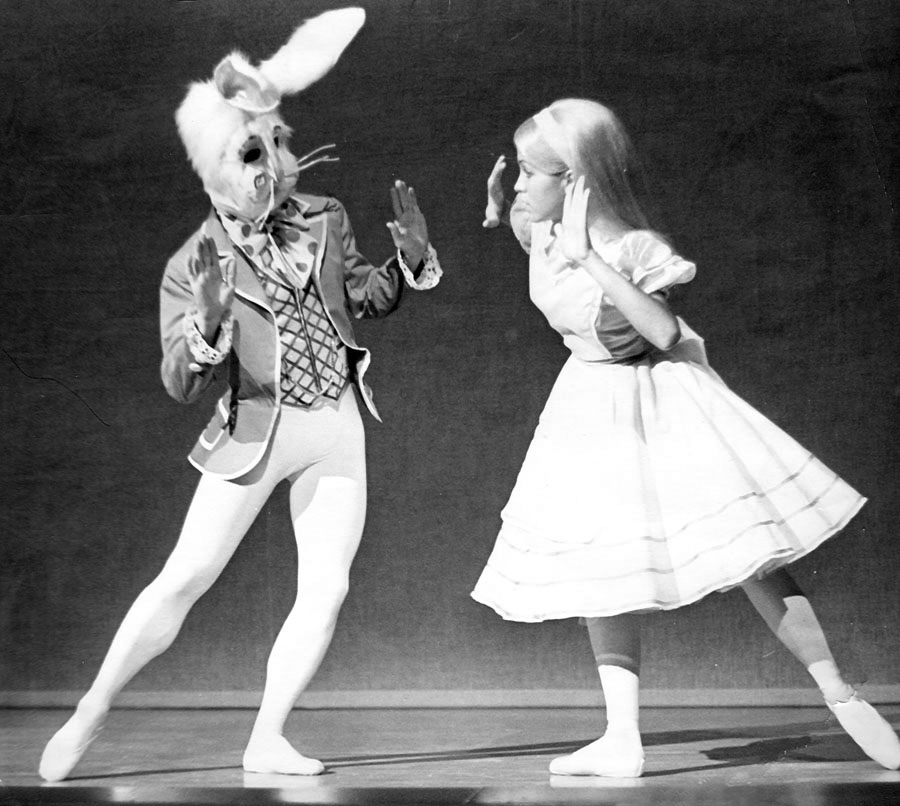
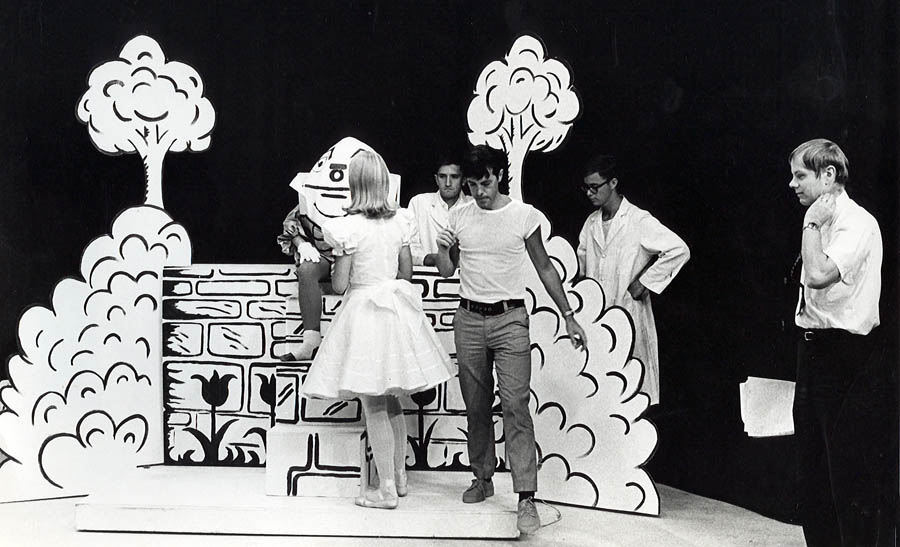
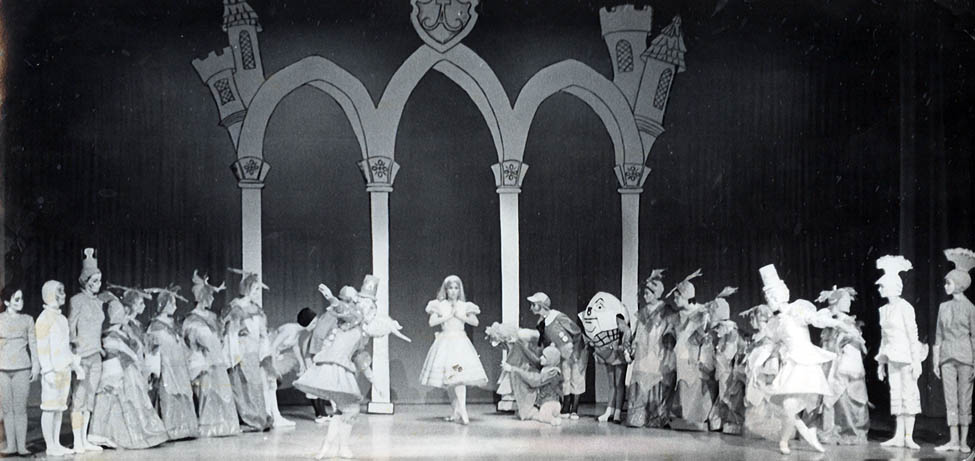
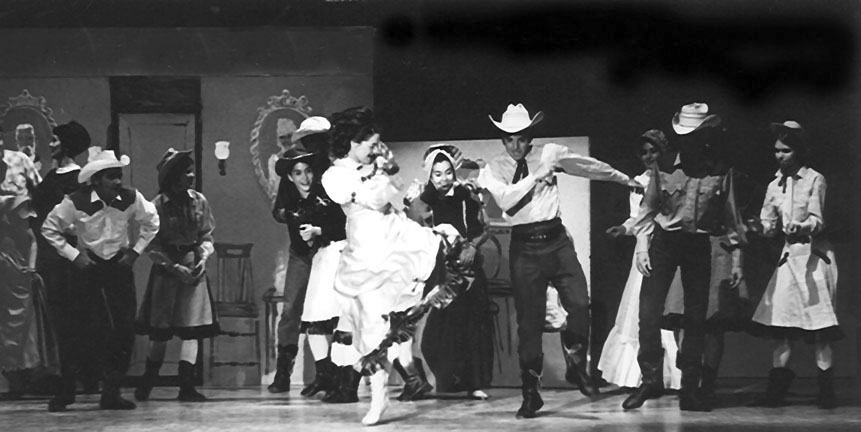
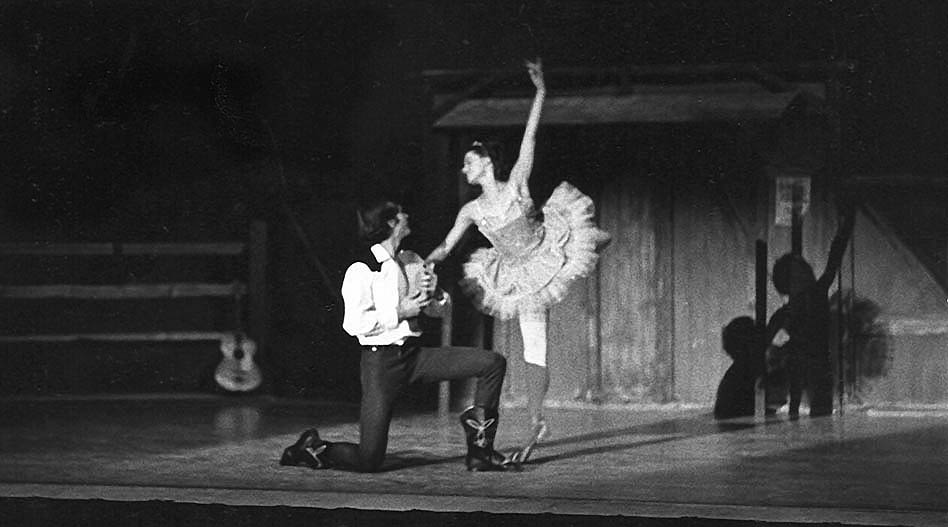
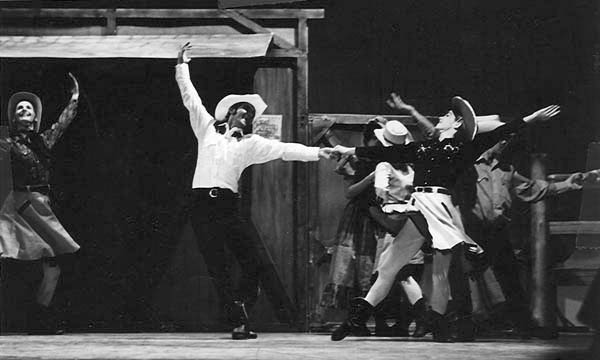

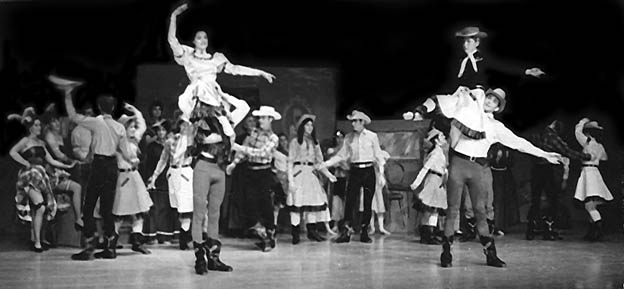
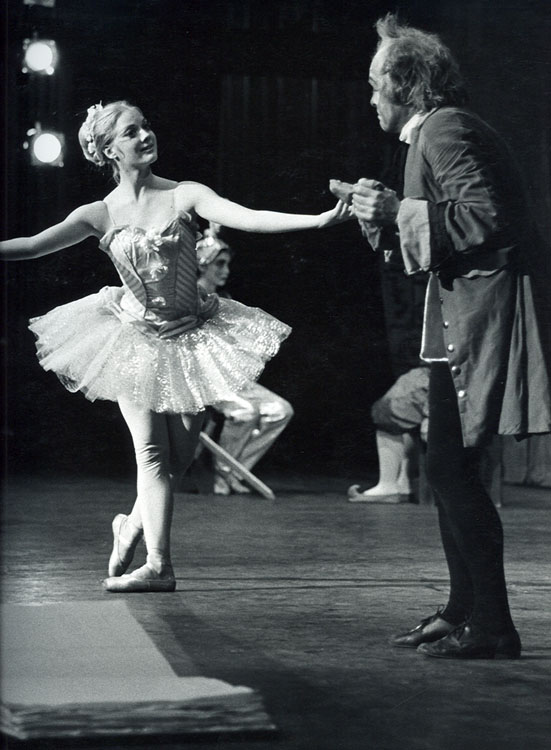
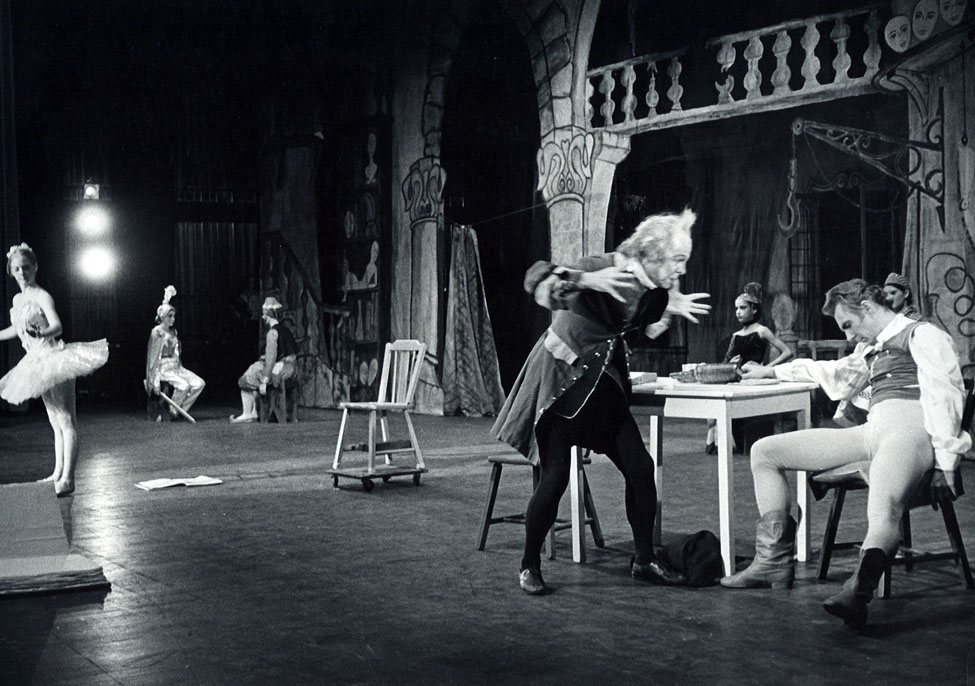
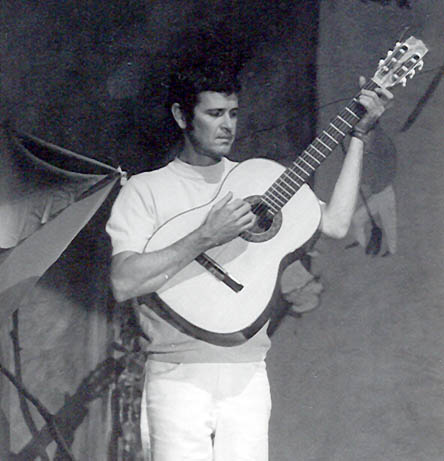 With
DeGrazia, McBride and the book author, Al Gordon present on
opening night, the house was filled. I had put in a scene
with the well known Southwestern folk singer,
With
DeGrazia, McBride and the book author, Al Gordon present on
opening night, the house was filled. I had put in a scene
with the well known Southwestern folk singer,
